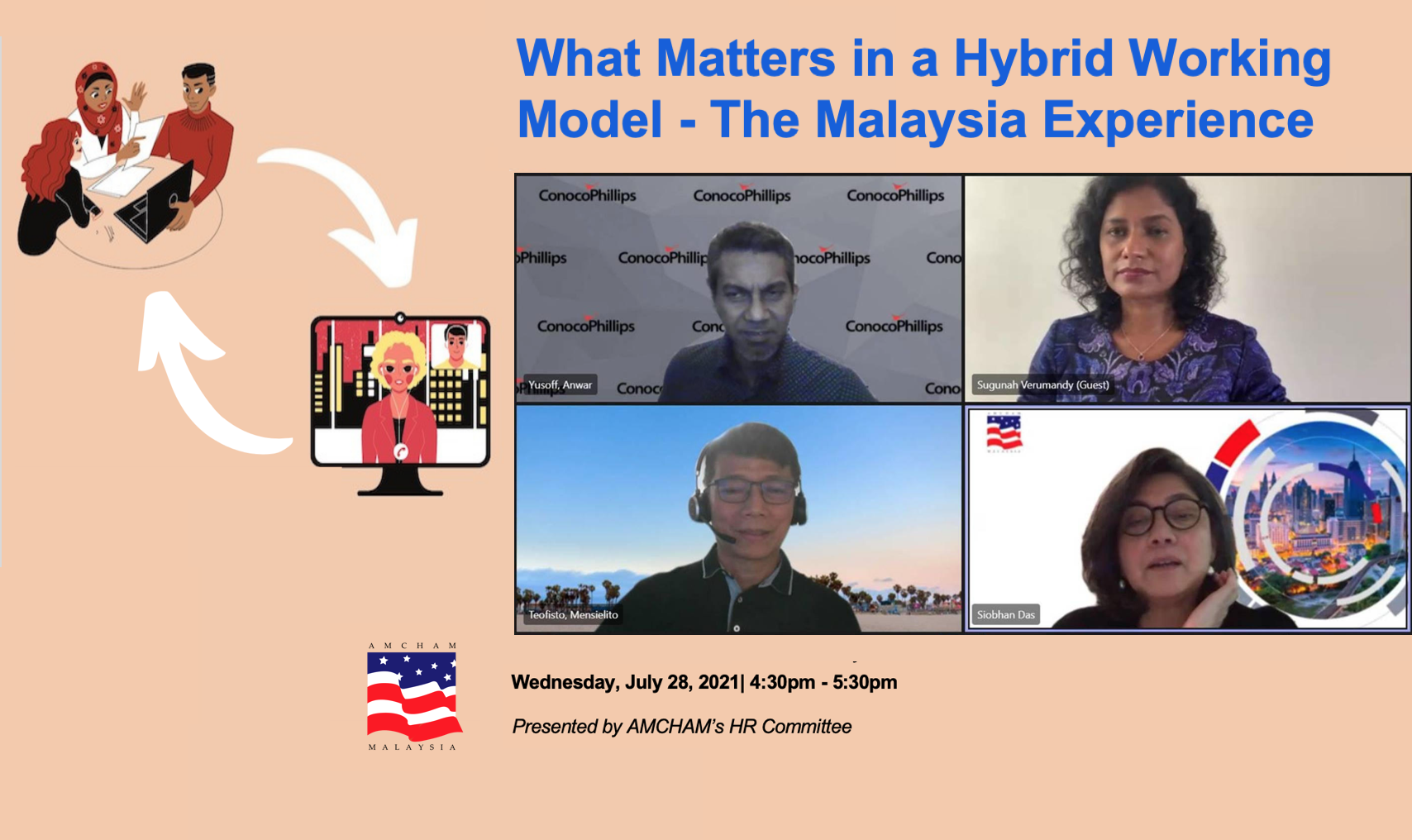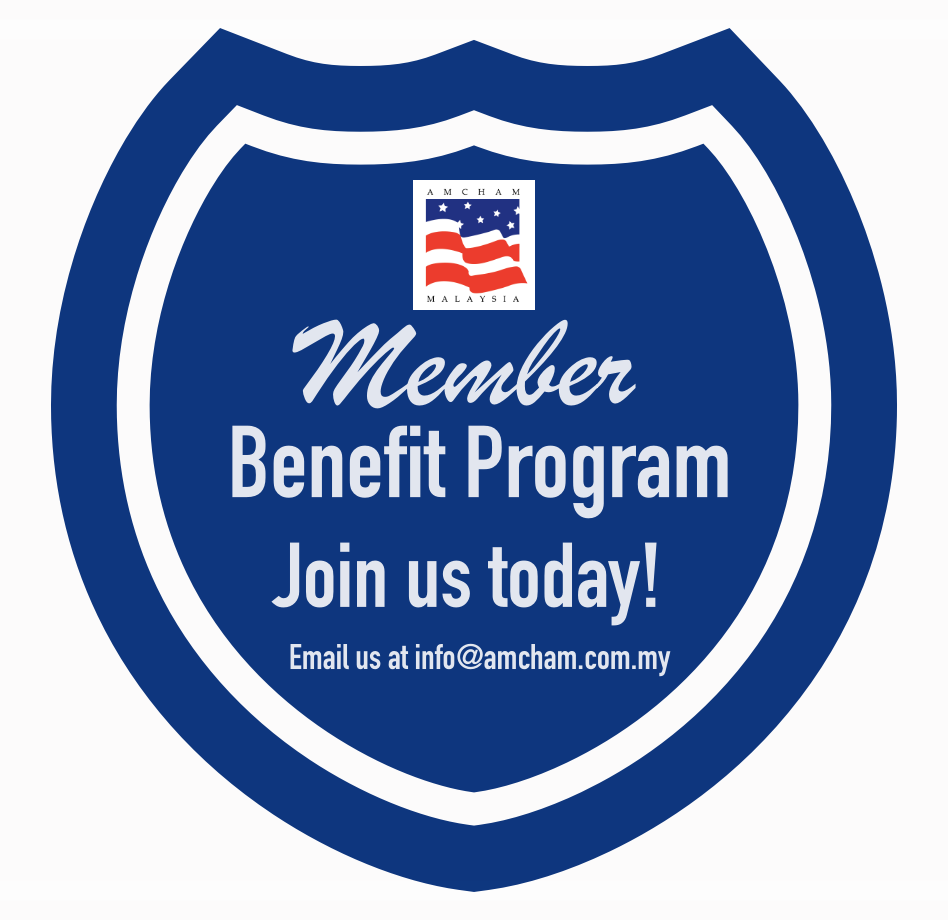What Matters in a Hybrid Working Model – The Malaysia Experience
What Matters in a Hybrid Working Model – The Malaysia Experience

The newly established HR Committee for AMCHAM Malaysia hosted their webinar on 28 July to kick-off a series of learning/networking sessions to discuss key issues related to talent, HR and organizational matters in Malaysia. Titled `What Matters in a Hybrid Working Model – the Malaysia Experience’, the session was led by a panel represented by Sugunah Verumandy, Country Head of Human Resources at HSBC Bank Malaysia Berhad; Anwar Yusoff, General Manager, HR & Administration at ConocoPhillips Malaysia; and Mensielito Teofisto, Asia Lead for Strategic Employee Relations at Intel.
The discussion, attended by HR professionals and members of AMCHAM, focused on the Future of Work driven by a new model of `hybrid work’. A timely topic, in view of the pandemic which has galvanized employers to look at new ways of working for their workforce.
To set the stage, Sugunah shared lessons learned from the pandemic through the lens of HSBC Malaysia:
- Technology has enabled continuity of operations, and rapid connection
- Shift in customer behavior where we are seeing more trust in online transactions and engagement
- Shift in employee mindset where we are seeing more flexibility and autonomy in choosing where/ when/ how to work
Today, employees are moving towards a preference towards `work from home’ and see the office mainly as a space to socialize. Like many employers, HSBC has developed a `hybrid work’ model to address the different work personas, depending on job scope and needs.
The pitfalls and challenges
Mensielito presented on the pitfalls and challenges to a hybrid model. When designing the right strategy, key questions to ask are: do we adopt a centralized or decentralized approached? The strategy should reflect the inherent culture of an organization – is it input based or output based?
Some of the challenges to consider:
- Benefits – do we scale back or adjust depending on the work location of employees?
- Office space – do we need to reconfigure to accommodate this change?
- Employee engagement/ collaboration – how do we ensure there is rigor and structure?
- New hires – how do we integrate new talent?
Whatever the strategy, it is important for leaders across the organization to advocate, stand behind the company model.
Making success possible
ConocoPhillips certainly has a strong framework in place – Anwar shared some attributes to help make the hybrid working model a success:
- Provide options to employees and lock-in commitment
- Define core hours – it could be fixed (eg. 9am-4pm) or flexible (eg. anytime provided is 8 hours/ day)
- WFH set-up – look at ways the employer can support with a focus on EHS
- Company culture – there is no one-size-fits all. An effective model should suit the company culture
- Productivity levels need to be maintained
The implementation of the new hybrid work model will be a journey – a learning mindset is key, while recognizing that there should be room to make mistakes, learn, hear from employees and pivot. The ultimate goal is to create an inclusive environment where employees feel empowered….to grow and better serve the communities where we operate.



